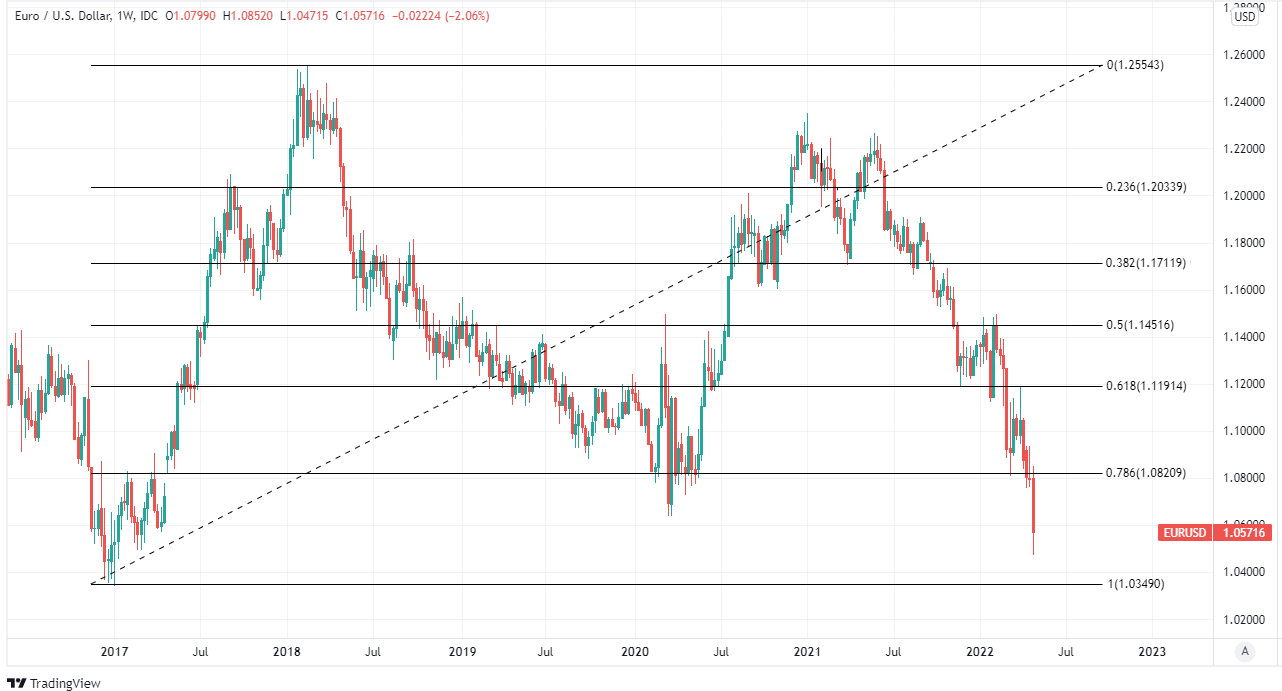EUR/USD Rate “Very Cheap” but Held Back by Energy Risks, Barclays Says
- Written by: James Skinner
-
- EUR rallies of April lows as USD slides into month-end
- But still on course for largest monthly loss since 2015
- Energy supply risks jeopardise prospects for recovery

Commerzbank HQ looms over the Frankfurt skyline. Image © Andre Douque, reproduced under CC licensing conditions
The Euro to Dollar exchange rate was set for its largest one month decline since March 2015 on Friday following another week of precipitous losses and research from Barclays suggests it’s the risks to European energy supplies that have left the single currency at “very cheap” levels.
Europe’s single currency rose strongly as the Dollar fell broadly from early in the Asia session on Friday while appearing to overlook Eurostat figures that showed non-energy and food price inflation rising sharply during April following what was a slower-than-expected first quarter economic performance.
But the Euro-Dollar rate was still carrying heavy losses for the week and remained on course for its largest one month decline since shortly after the European Central Bank (ECB) first began quantitative easing in 2015.
“In our March Outlook, we laid out a forecast path that allowed for some moderate EURUSD near-term downside, to 1.09. But this quick April slide to 1.06, despite the realisation of a set of catalysts which we thought would boost the EUR, was beyond our expectation,” says Themistoklis Fiotakis, head of FX research at Barclays.
The Euro had opened the week trading above 1.07 but fell to a low of 1.0450 by Thursday’s close, extending its decline from just above 1.10 earlier in April and with the bulk of its latest losses following reports that Russian gas supplies to Poland and Bulgaria had ceased.

Both reportedly refused to comply with the terms of a Kremlin decree requiring them to open accounts with Gazprombank through which Euro denominated payments for Russian gas would be converted into Roubles in Moscow and by the state energy giant Gazprom.
“The EU commission has opined that the K-accounts mechanism is potentially operable and there are economic incentives to keep that route of payments in place. But the politics and optics of the mechanism can lead to unexpected developments. We are for now keeping our outlook unchanged, but remain alert and will assess the situation as events unfold,” Fiotakis also said on Thursday.
This week’s energy stoppage was followed by potentially mistaken market speculation that those same above referenced factors could soon see other European countries also cut off from Russian gas pipelines, which would be a significant event for the Eurozone economy.
Many economists expect that any abrupt stoppage of energy supplies would hamper economic activities and create significant hardship for companies and households, hence why energy has not been targeted as part of any European sanctions over the Russian invasion of Ukraine.
"To be sure, there are other, technical near-term forces at work. For instance, the USD is naturally much more leveraged than the EUR to domestic cyclical forces than global ones. As such, the depreciation in the CNY, driven by the shock to growth from COVID policies in China, is, relative to other factors, having a more profound effect on the EUR,” Fiotakis and colleagues say
“But still, this is a COVID shock. And as we have seen, COVID demand damage tends to correct with a compensating surge at the reopen. In that sense, we would not chase EURUSD lower from very cheap levels based purely on the COVID shock. However, a disruption in natural gas flows owing to RUB payments would be much more disruptive for the EUR,” they added.
Barclays’ latest forecasts released in March looked for the Euro-Dollar rate to trade around 1.09 through the second quarter, marking an effective bottom for the downtrend that began in January 2021 before giving way to a recovery back toward the 1.15 handle by year-end.
So far Barclays has been undeterred from that outlook but warned clients on Thursday that if either an embargo or some other factor was to disrupt gas supplies to Europe then it would “lead us to revise our EURUSD forecasts meaningfully.”
Source: Barclays Research.

